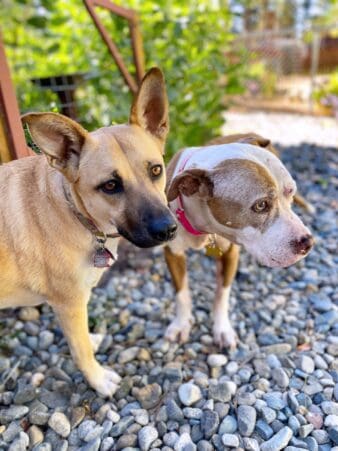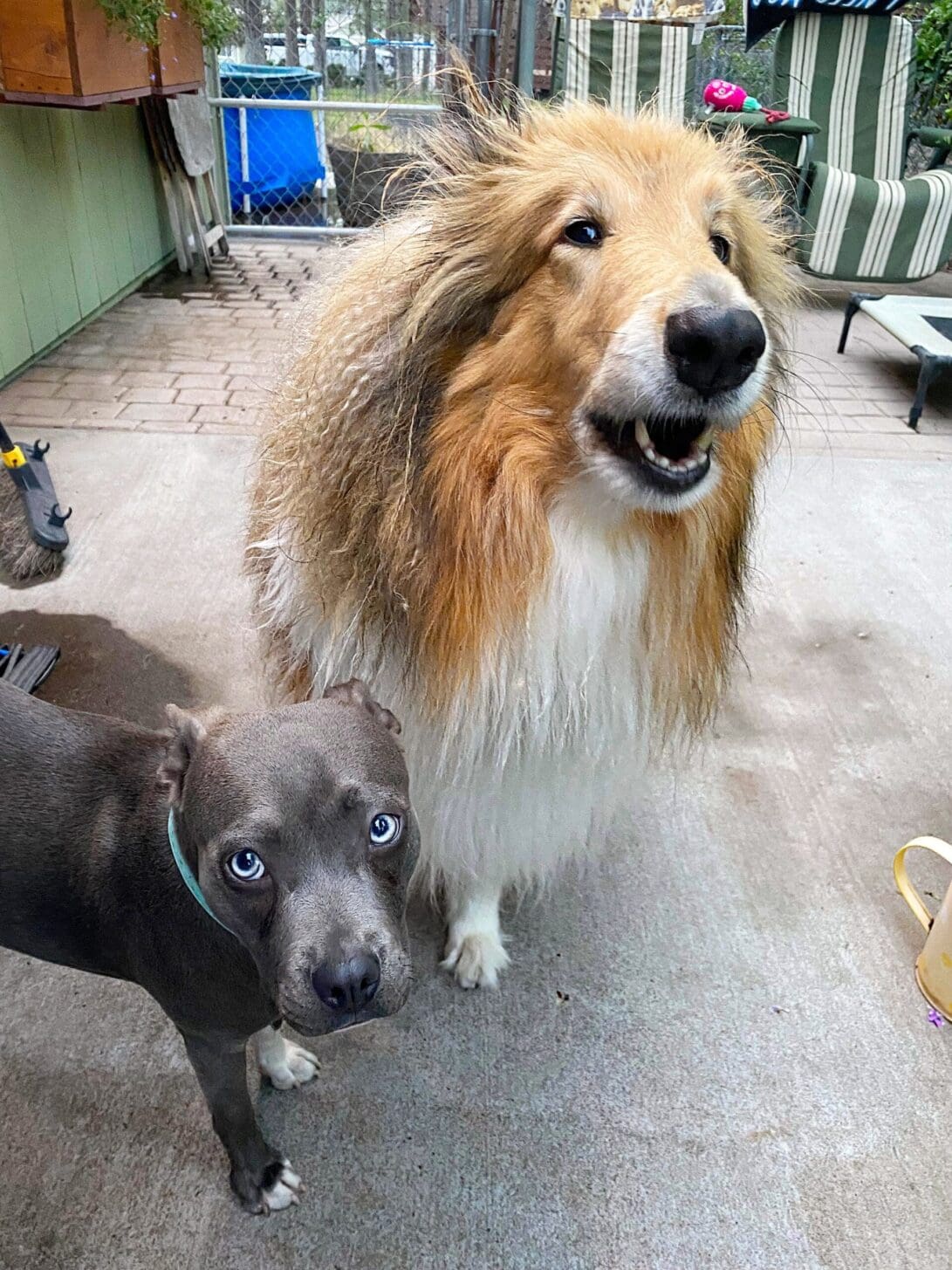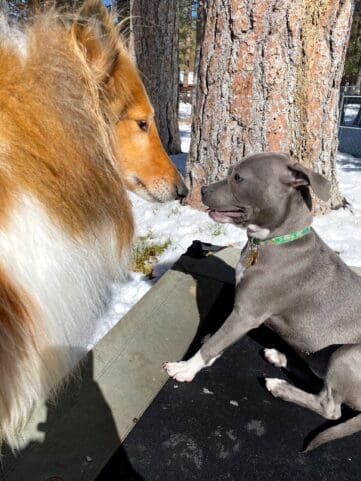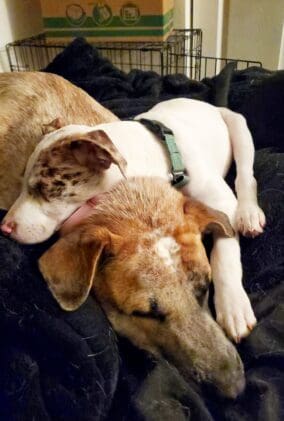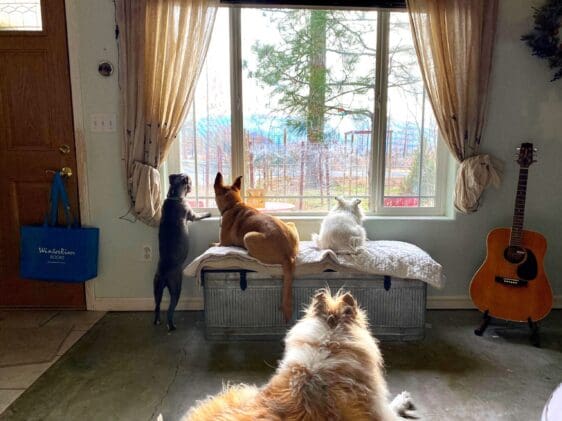At Rescue Ranch, we love pets of all kinds! We’re always delighted when adopters successfully add a rescue dog to their multi-pet household. We aim to place every dog for their lifetime, so establishing harmony between your new pooch and other pets is critical. We’ve prepared some helpful tips for introducing your furry family members.
Introducing new pack members
The key to successful dog-to-dog introductions is being a good leader. This means foreseeing and preventing potential problems before they arise. Even the calmest dogs can make mistakes when they’re getting to know each other. It’s best to provide clear guidance rather than depend on your dogs’ judgment.
- If possible, let dogs meet on-leash in neutral territory. A leashed pack walk can do wonders to smooth the way.
- At home, each dog needs a separate space to eat and sleep. Crate training helps give everyone peace of mind.
- We know you love pets, but adult dogs need time to adjust to a new puppy. Youngsters can be annoying, so make sure adults have the separate space they need.
- Avoid jealousy by doling out equal attention, praise, and treats.
- Supervise play until your pack is integrated.
- If friction arises, intervene and correct. Separate your dogs until tempers cool.
- If discord arises among pack members, call Rescue Ranch for advice and/or attend our free socialization classes.
Introducing dogs to cats
Most dogs arrive with little background information, so we rarely know their history with cats. Sometimes we can test their response to felines, but, usually, our advice is based on what we know about the dog’s personality. Here are some general tips:
- Provide a separate cat area .
- Make sure felines have an escape route at all times (eg. a pet gate, cat tree, or shelf).
- If possible, let your pets see each other through a clear barrier or screen.
- Keep your dog on leash during introductions.
- Restrain your dog, and let your cat choose to approach or not.
- Never allow your dog to chase your cat, even in play!
- If your dog knows basic obedience, put her on a “stay” during introductions.
- Watch your dog’s body language: you want a relaxed stance, soft tail, and low to moderate interest in the cat.
- If your dog shows predatorial body language (fixed stare, stiff neck and tail, dropped head) correct and redirect her attention immediately.
- Try the blanket swap technique to help pets learn each others’ scents.
- Be patient! Good relationships take time.
Dogs may need help learning to love small pets
For years, our family has included dogs and house rabbits without any problems. That being said, many dogs perceive small animals (rabbits, birds, or rodents) as prey. Given time and clear guidelines, your pup can learn that small pets are family members. Meanwhile, protect small animals with secure living quarters, and supervise all interactions with your dog, even through a barrier.
A happy multi-pet family will be the result!






